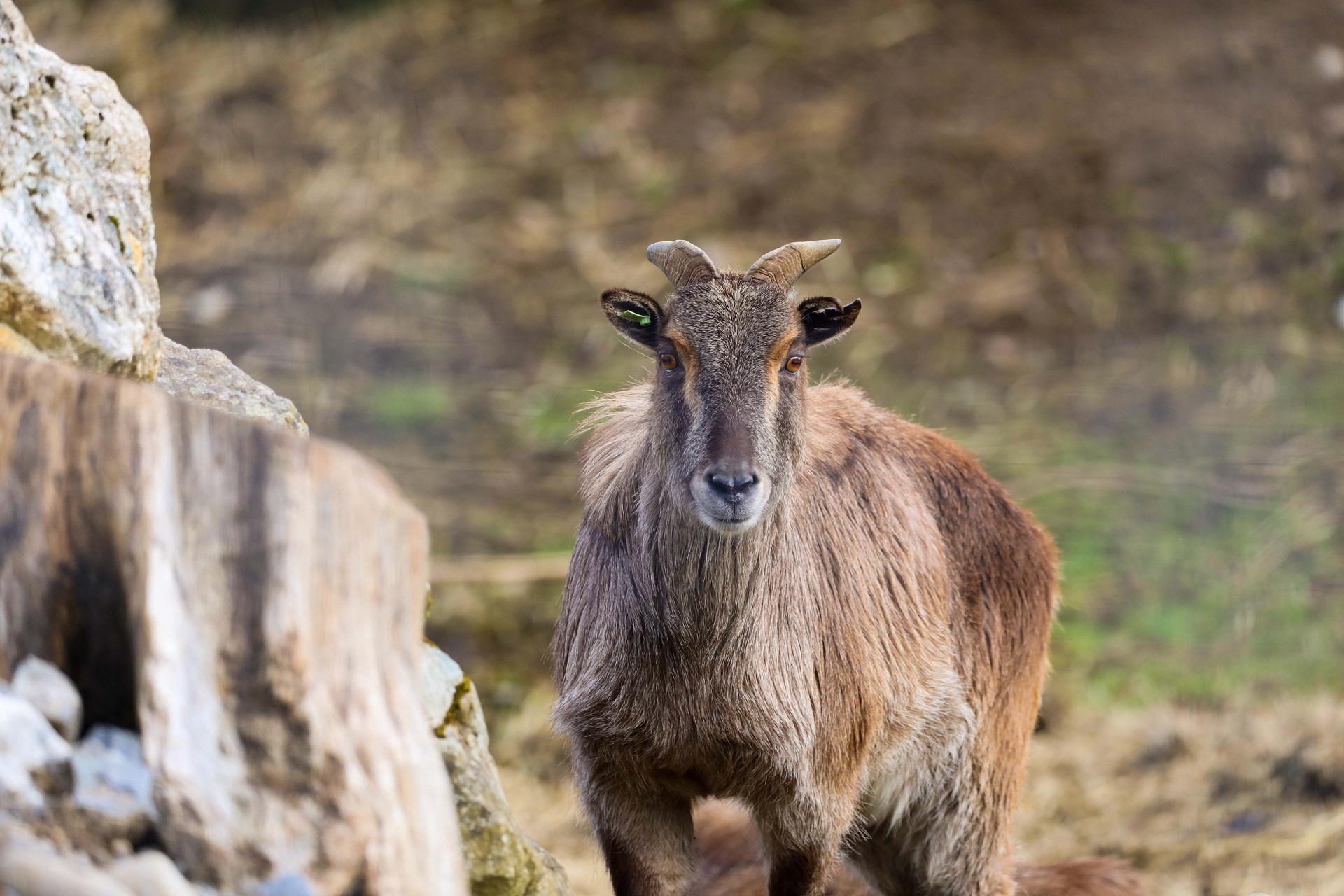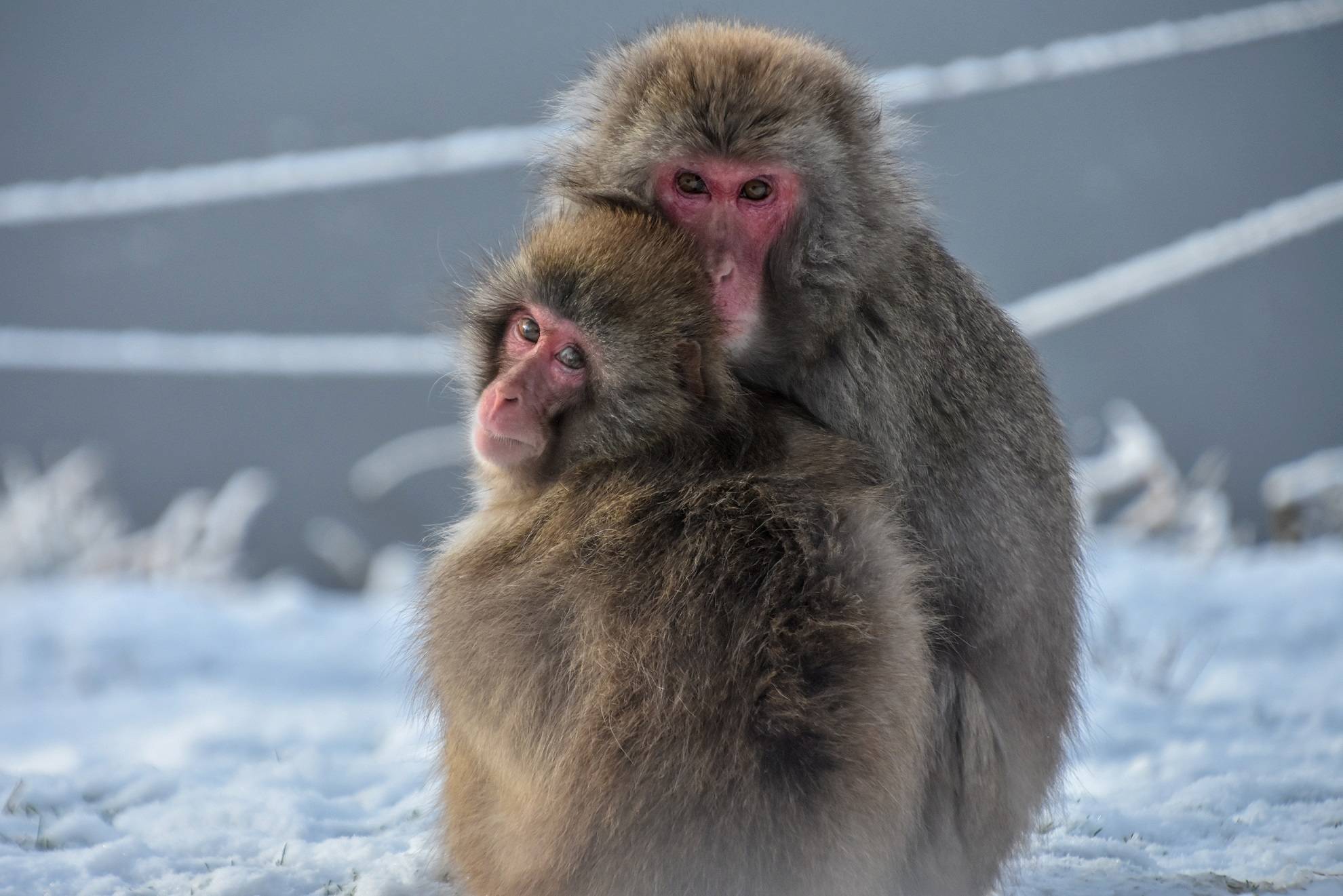Himalayan tahr
Hemitragus jemlahicus

There is a large herd of Himalayan tahr here at Highland Wildlife Park.
Himalayan tahr live at high altitudes on rugged mountain slopes and wooded hills. Their flexible, rubbery hooves help them to move over rocky terrain quickly and confidently. Both males and females have backward-curving horns with a triangular cross-section.
The Himalayan tahr showcases sexual dimorphism. This is when physical differences between males and females of the same species go beyond their reproductive organs. Males are much larger than females, sometimes weighing over 100 kg, while females are usually under 60 kg. Males also have thicker, fuller manes and significantly larger horns.
Himalayan tahr are native to the Himalayas. They live in the rugged mountain slopes and wooded hills of Nepal, northern India, southern Tibet and Bhutan.
Population
Decreasing
Diet
Herbivore
Habitat
Mountains
Fact file
Males having large horns that they use for combat during the breeding season
Their diet mainly consists of grasses, shrubs, and herbs, and they play an important role in the mountain ecosystem as grazers
Tahrs have excellent eyesight, hearing and smell, helping them detect predators like snow leopards or humans from a distance
![Himalayan tahr looking directly at camera [eye contact] IMAGE: Amy Middleton 2023](https://images.rzss.org.uk/media/Highland_Wildlife_Park/HWP_animals/Himalayan_tahr/himalayan_tahr_1.jpg)
How we're helping
Like all the animals in our care, our tahr are amazing ambassadors for their relatives in the wild and help hundreds of thousands of people connect with nature every year. They encourage visitors to learn about the threats facing wildlife and the action they can take to help create a world where nature is protected, valued, and loved.
As a wildlife conservation charity, we care for the animals here at the park and work to protect species at risk around the world. From providing expertise in genetics and veterinary health to protecting wild places with local conservation partners, and even restoring threatened species to the wild, we are active where we are needed most.
Find out more about RZSS conservation
